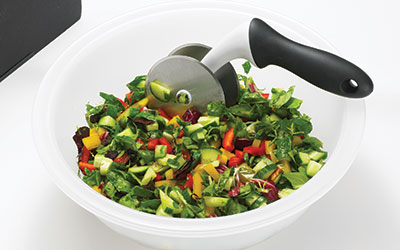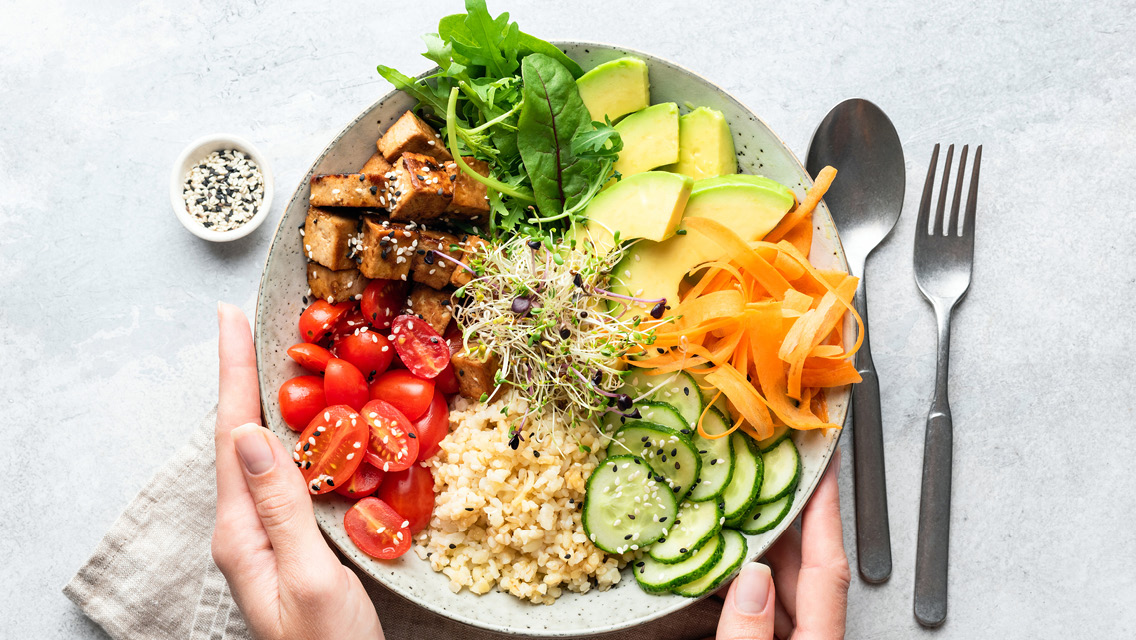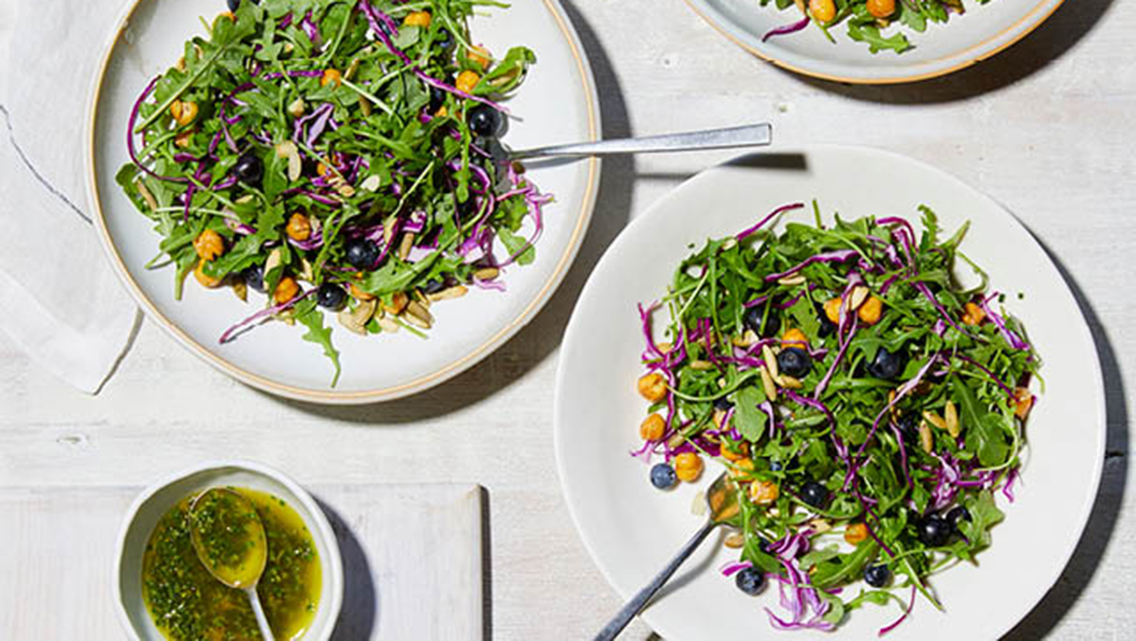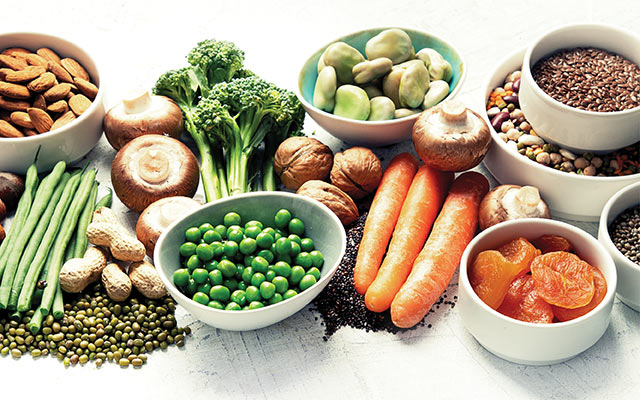From the time you get up in the morning until you crawl back into bed at night, chances are you have been exposed to dozens of potentially harmful food ingredients. From additives, preservatives and pesticide-ridden produce to caffeine, alcohol and carcinogens produced during cooking, our diets are full of toxins that many experts believe undermine our health and well-being. That’s the bad news.
And the good news? “Luckily, our bodies are built to handle the occasional intake of toxic compounds, and we have innate natural processes to detoxify our cells and tissues,” says Elson Haas, MD, author of Staying Healthy with Nutrition (Celestial Arts, 2006) and The New Detox Diet (Celestial Arts, 2004). “But when we are consistently exposed to these chemicals through our food and our environment, the body can’t keep up. That is when health problems can arise.”
What Haas is referring to is the “toxic load” problem, the harmful accumulation of toxins in our bodies. When we’re exposed to heavy metals and industrial chemicals – that are in the air, water, soil or other sources – these toxins tend to build up in our bones, organs, fat and other cell tissues over time. They are then joined by the stores of food-borne toxins we take in through our digestive systems. As a result, we are left more vulnerable to everything from cancer to various chronic diseases.
While the notion of totally detoxifying your diet can seem a daunting task (even whole, organic foods can contain some toxic components), even a little effort can make a big difference in your overall toxic intake and can substantially reduce your body’s toxic burden over time. During the backyard-grilling season, for example, avoid blackening your steaks and hamburgers. That way, you’ll avoid DNA-damaging heterocyclic amines, or HCAs – chemicals created when meats are cooked at high temperatures and that have been linked to cancer.
Likewise, it’s a good idea to minimize your intake of starch-based foods cooked at high temperatures, such as French fries, because they tend to contain high levels of acrylamide, a compound that has been linked to cancer in laboratory animals.
Too much caffeine and alcohol can also cause problems. Caffeine taxes the adrenal glands and raises levels of the stress hormone cortisol, and the liver breaks down alcohol into acetaldehyde, a carcinogen also found in cigarette smoke. While individual biochemistry dictates how harmful these substances can be, most of us would do well to moderate our intake.
Cleaning up your diet can include cutting out foods that contain artificial sweeteners, colors and preservatives, as well as those filled with health-compromising trans fats. Cutting back on excess sugars and saturated fats is another important step.
That said, the foods you do eat are just as important as those you avoid. To support your body’s own cleansing processes, choose foods that help detoxify tissues. For example, cruciferous vegetables such as broccoli, cabbage and Brussels sprouts contain glucosinolates, which help cleanse the liver. The fiber in beans and whole grains binds toxins in the digestive tract and then shuttles them out of the body.
To protect cells from toxic damage, look to antioxidant-packed produce like kale, spinach and blueberries, as well as green tea. And, of course, drinking plenty of pure water will help flush the tissues of impurities and keep the body’s detoxification processes running smoothly.
Minimizing Your Exposure
According to data compiled in 2006 by the Environmental Working Group, a nonprofit research organization in Washington, D.C., people can lower their pesticide exposure by almost 90 percent simply by avoiding the top 12 most contaminated fruits and vegetables (see “Smart Shopper’s Guide to Choosing Produce“). And another great strategy is to buy organic, says Haas. “You need to lighten your daily toxic load, and eating unprocessed, organic foods is one of the best ways to do that.”
Farmers grow organic crops without conventional pesticides, petroleum- or human sewage–based fertilizers, or bioengineering. Organic meats, poultry, eggs and dairy products come from animals that receive no antibiotics or growth hormones. Organic agriculture utilizes conservation practices that protect soil, water and air. And while organic foods often do cost more, many of those who prefer organic practices view the extra cost as a good health investment and a reflection of the “true cost” of sustainably producing high-quality food. (For more on true-cost thinking, click here.)
“The current science is clearly showing pesticide exposure linked to serious illnesses,” says Ted Schettler, MD, MPH, science director for the Science and Environmental Health Network in Ames, Iowa, and coauthor of In Harm’s Way: Toxic Threats to Child Development (Greater Boston Physicians for Social Responsibility, 2000). In 2004, for example, the Ontario College of Family Physicians found positive associations between pesticide exposure and leukemia, nervous-system damage, birth defects and a variety of cancers – including those of the brain, prostate, kidney and pancreas, among others.
How each pesticide acts in the body is not completely clear, but some studies indicate that they seem to interfere with and block hormones, as well as damage cells – especially those in the brain and nervous system. And since they are stored in body fat, they can easily accumulate.
Because many Americans do not have ready access to organic fruits and produce, or can’t always afford the higher prices, it makes sense to determine when to fork over the extra cash and when you can safely choose conventional versions (again, see “Smart Shopper’s Guide to Choosing Produce“). But animal products are a different story, says Haas. “I don’t recommend ever eating conventionally raised meats or dairy.”
Conventional meat and poultry are raised with the help of synthetic hormones, antibiotics, pesticides and chemical fertilizers, which bioaccumulate in the animal’s fat cells. The embedded toxins can then make their way into the systems of those who eat the meat.
On factory farms, animals are fed corn and grains, as well as additives and byproducts, to make them gain weight. And because cattle are meant to eat grasses, feeding them grain alters the acidity levels in their stomachs, some experts contend, making them more susceptible to bacteria and infections that can also be passed on to the consumer.
A 2002 study published in the European Journal of Clinical Nutrition reported that grass-fed cattle were healthier than their corn-fed counterparts and produced leaner cuts of meats.
“Clearly, eating organic food, including meats and produce, results in demonstrably lower pesticide exposure and is likely to be much healthier, especially for children,” says Schettler. “For health reasons, I recommend thinking of meat as a condiment and eating it in smaller portions. Substitute it with other forms of protein such as legumes, nuts and fish.”
Toxins in Fish?
Fish is a great source of lean protein and one of the best ways to get a healthy dose of omega-3 fatty acids – those good fats that protect your heart, support your brain and keep your cells healthy. But the world’s fisheries are diminishing, and our oceans and rivers are not as clean as they once were. Many wild fish are full of mercury, polychlorinated biphenyls (PCBs) and other toxins, which have been linked to brain and nervous-system impairment. Many farmed fish, including Atlantic salmon, have been shown to contain high percentages of chemical pollutants.
On the other hand, farm-raised trout, catfish, shrimp, striped bass, sturgeon, arctic char and flounder are considered healthy and sustainable choices. Be sure to ask your seafood supplier where the fish came from and how it was caught. Also make use of these helpful resources:
- Look for the Seafood Safe label, which indicates that the item is tested regularly for PCBs and mercury and that it meets quality assurance guidelines for that species. Visit www.seafoodsafe.com for more information.
- Check out www.oceansalive.org for an up-to-date listing of the safest fish varieties.
Above all, try to strike a healthy balance between being an informed consumer and a terrified one. Eating clean does not have to be an exercise in rigid perfection.
“Certainly, we don’t want people walking around the grocery store paranoid about what they are putting in their cart,” says Haas. Yet, a bit of education and some wise choices can make all the difference as you strive to minimize your intake of toxins. And when you’re talking about your long-term health, that’s a pretty small price to pay.
7 Simple Ways to Detoxify Your Diet
- Cut back on foods made with chemical additives and artificial flavors and colors, which have been linked to everything from allergies to cancer.
- Forego foods made with trans fats. They create free radicals in the body, which have been linked to cancer, heart disease and other conditions.
- MInimize use of artificial sweeteners, many of which have not been proven safe for extended use or in combination with other chemical compounds.
- Drink filtered water. Many studies show that tap water, particularly when filtered, is as good as or better than many bottled waters. To check the quality of the tap water in your area, contact your local health department or visit www.epa.gov/safewater.
- Refrigerate oils to keep them from turning rancid.
- Store and heat foodsin glass containers, rather than plastic or styrene, to prevent chemicals from leeching into foods.
- Avoid overcooked meats. They contain heterocyclic amines (HCAs), which have been linked to cancer.
This article originally appeared as “Eat Clean” in the May 2007 issue of Experience Life.




This Post Has 0 Comments